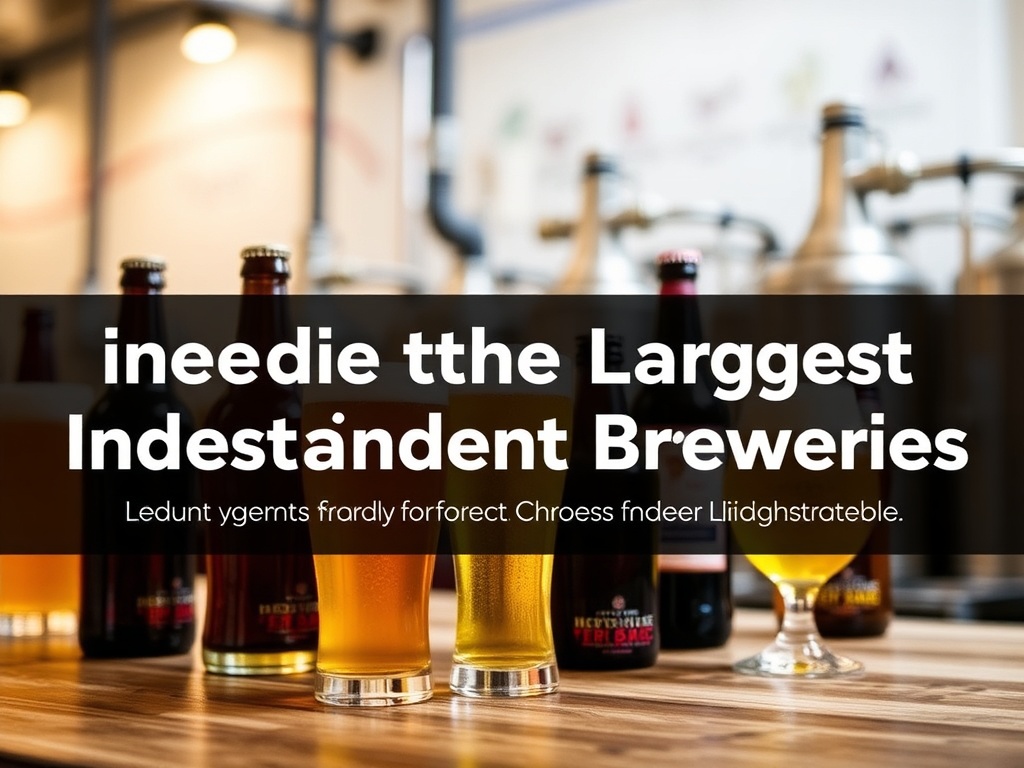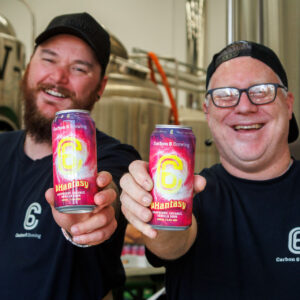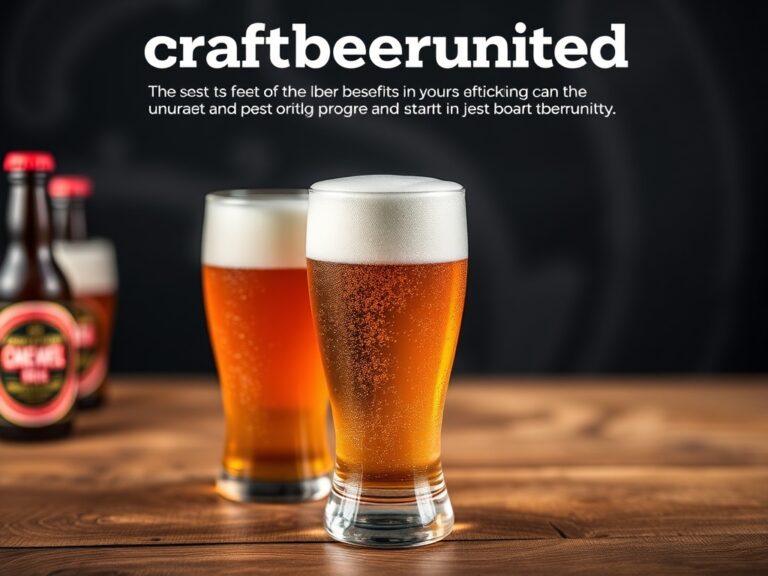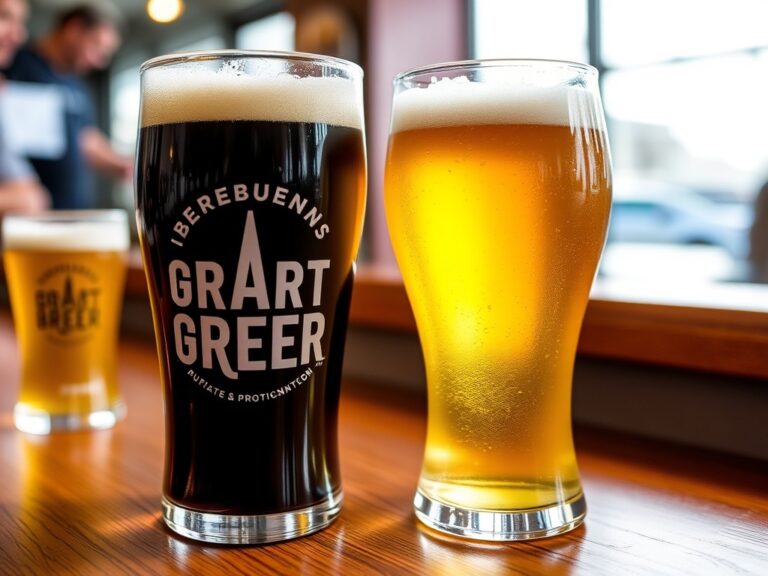Inside the World of the Largest Independent Breweries: How They Are Shaping Tomorrow’s Beer Landscape

Introduction
In my experience exploring the world of craft beer, I’ve found that the largest independent breweries hold a unique position. They represent the heart and soul of true craft brewing—small enough to innovate but large enough to influence the industry on a significant scale. When I first started delving into their stories, I was amazed at how much impact these breweries are making, despite their independence.
I want to share what I’ve learned about these largest independent breweries because, in my opinion, they’re not just shaping the future of beer—they’re redefining what it means to be independent in today’s competitive market. From their innovative approaches to sustainability efforts, these breweries are trailblazers. I believe understanding their journey is essential for anyone interested in the evolution of the beer landscape.
The Rise of the Largest Independent Breweries
In my research, I’ve discovered that the largest independent breweries are experiencing a remarkable growth phase. Contrary to the common perception that big breweries are always corporate giants, these independents are proving that size and independence can coexist beautifully. From what I’ve learned, many of the largest independent breweries started small—passionate entrepreneurs turning their brewing dreams into reality—yet they’ve managed to scale without sacrificing their core values.
One thing that truly impressed me is how these breweries leverage community support and brand loyalty to expand. I’ve seen examples where they grow through strategic collaborations, innovative product lines, and a commitment to quality. My experience has shown that the largest independent breweries often prioritize transparency and authenticity, which resonates deeply with consumers looking for genuine craft beer experiences.
**H3: How They Maintain Independence at Scale**
From what I’ve learned, maintaining independence while scaling is a challenge many of the largest independent breweries face. I’ve discovered that they often rely on strong ownership structures, clear mission statements, and a commitment to community engagement. For example, some breweries are owned by founding families or cooperative groups that prevent corporate takeovers, ensuring they retain their independence.
In my experience, this approach not only sustains their brand identity but also fuels innovation. I recommend paying close attention to how these breweries balance growth with their core values, as it’s a model many new craft breweries aspire to emulate.
**H3: Key Players in the Largest Independent Breweries Scene**
Through my exploration, I’ve found that the largest independent breweries include some household names that have stayed true to their roots. Breweries like Sierra Nevada, Founders, and New Belgium stand out as giants that maintain independence despite their size. I’ve had the pleasure of visiting a few, and their passion for quality and innovation is palpable.
From my perspective, these breweries serve as inspiration for smaller craft breweries aiming to grow without losing their authenticity. They demonstrate that scaling responsibly is possible if you stay committed to your founding principles.
Innovations and Trends Led by Largest Independent Breweries
In my experience, the largest independent breweries are often at the forefront of industry trends and innovations. I’ve found that their ability to adapt and lead is driven by a culture of experimentation and dedication to quality.
One trend I’ve observed is their push towards sustainability. Many of these breweries invest heavily in eco-friendly practices, from water conservation to renewable energy. For example, I recommend exploring breweries like Sierra Nevada, which has pioneered sustainable brewing techniques. Their leadership shows the industry that environmental responsibility can go hand-in-hand with growth.
**H3: Crafting New Styles and Flavors**
From what I’ve seen, the largest independent breweries are constantly experimenting with new styles and flavors. I’ve tried some of their innovative beers—like barrel-aged stouts and sour ales—that push the boundaries of traditional brewing. Their willingness to take risks inspires smaller breweries and keeps the industry fresh and exciting.
I’ve found that their R&D departments are often quite advanced, employing new fermentation techniques and ingredient sourcing strategies. I recommend keeping an eye on their latest releases if you want to stay ahead of beer trends, as they tend to set the pace for the industry.
**H3: Embracing Technology and Digital Engagement**
In my experience, the largest independent breweries also excel in leveraging technology. From implementing advanced brewing equipment to utilizing data analytics, they optimize every aspect of their operations. I believe their digital marketing strategies, including social media and virtual tastings, help them connect with a broader audience and foster community.
I recommend following their online platforms—many of these breweries share behind-the-scenes content and engage with fans directly. They show that embracing technology is essential for remaining competitive and relevant.
Challenges Facing the Largest Independent Breweries
While I admire the growth and innovation of the largest independent breweries, I’ve also learned that they face significant challenges. Scaling without losing independence is a delicate balancing act, and many face pressure from larger conglomerates or investors seeking control.
From my research, supply chain disruptions and rising ingredient costs are ongoing hurdles. I’ve found that staying resilient requires strategic planning and diversification. Many of the largest independent breweries are investing in local sourcing and sustainable practices to mitigate these issues.
**H3: Maintaining Authenticity Amid Growth**
One of the toughest challenges is maintaining authenticity. I’ve spoken with brewers who worry that rapid expansion might dilute their brand’s core values. I believe that staying true to their roots is vital for their identity and customer loyalty. It’s inspiring to see some of the largest independent breweries implementing strict guidelines to preserve quality and authenticity during growth phases.
**H3: Competition and Market Saturation**
Another challenge I’ve observed is market saturation. With so many craft breweries emerging, standing out becomes more difficult. I recommend that the largest independent breweries focus on innovation, storytelling, and community engagement to differentiate themselves. From what I’ve experienced, authenticity and connection are key to thriving in a crowded marketplace.
Future Outlook: How Largest Independent Breweries Will Shape Tomorrow’s Beer Landscape
Looking ahead, I believe that the largest independent breweries will continue to be catalysts for change. Their emphasis on innovation, sustainability, and community will likely influence the entire industry. I’ve found that these breweries are increasingly collaborating on projects that promote environmental responsibility and social equity.
From my perspective, their ability to adapt to consumer preferences—such as non-alcoholic beers, organic ingredients, and personalized experiences—will determine their ongoing success. I recommend keeping an eye on emerging trends within these breweries, as they often set the tone for the broader beer landscape.
**H3: Leading the Industry in Sustainability**
Based on my observations, the largest independent breweries are positioned to lead the industry toward greener practices. Their investments in eco-friendly facilities and waste reduction initiatives are paving the way for a more sustainable future.
**H3: Influencing Policy and Industry Standards**
From what I’ve learned, these breweries also play a role in shaping industry standards and advocating for policy changes that benefit craft brewers. Their collective voice can influence regulations, ensuring that independence and quality remain prioritized.
References and Resources
Throughout my research on largest independent breweries, I’ve found these resources incredibly valuable. I recommend checking them out for additional insights:
Authoritative Sources on largest independent breweries
-
Brewbound
brewbound.comA leading industry publication providing news, analysis, and insights into the largest independent breweries and craft beer trends.
-
Craft Brewing Business
craftbrewingbusiness.comProvides in-depth articles on the business side of craft brewing, including growth strategies of the largest independent breweries.
-
Brewers Association
brewersassociation.orgAn industry organization advocating for craft brewers, including many of the largest independent breweries.
-
New Belgium Brewing
newbelgium.comOfficial site of one of the major largest independent breweries, showcasing their sustainability and innovation efforts.
-
Sierra Nevada
sierranevada.comTheir commitment to sustainability and quality makes Sierra Nevada a benchmark for the largest independent breweries.
-
Founders Brewing
foundersbrewing.comA pioneer among the largest independent breweries, known for their bold flavors and innovative techniques.
-
BeerAdvocate
beeradvocate.comCommunity-driven reviews and discussions that often highlight the largest independent breweries and their popular beers.
-
CraftBeer.com
craftbeer.comOfficial site of the Brewers Association, offering resources and stories about largest independent breweries and craft beer trends.
Frequently Asked Questions
Frequently Asked Questions
What defines the largest independent breweries?
In my experience, the largest independent breweries are those that have achieved significant production scale while maintaining their independence from corporate ownership. They often produce millions of barrels annually and prioritize authenticity, quality, and community engagement. I recommend looking into their ownership structures and production volumes to understand what sets them apart.
How are the largest independent breweries influencing the beer industry?
From what I’ve observed, the largest independent breweries are leading innovation, setting sustainability standards, and shaping consumer preferences. They often pioneer new styles and advocate for policies that support independent craft brewing. I believe their influence encourages smaller breweries to strive for excellence while remaining true to their roots.
What challenges do the largest independent breweries face today?
In my experience, scaling without losing independence is one of the biggest challenges. Supply chain issues, rising raw material costs, and market saturation also pose hurdles. I recommend that these breweries focus on innovation, community support, and sustainability to stay resilient in a competitive landscape.
What does the future hold for the largest independent breweries?
Based on my research, I believe the largest independent breweries will continue to push boundaries, embrace sustainability, and influence industry standards. Their commitment to innovation and community will likely keep them at the forefront of shaping tomorrow’s beer landscape.
How can I support the largest independent breweries?
In my experience, the best way to support them is by purchasing their products, participating in brewery events, and sharing their stories. I recommend exploring local breweries that are part of the largest independent breweries network and engaging with their community initiatives.
Conclusion
In conclusion, my research on largest independent breweries has shown that they are the driving force behind much of the innovation and sustainability in the craft beer industry. I believe their ability to grow while maintaining independence is inspiring and essential for the future of beer. I hope this guide helps you appreciate their role and encourages you to support their journey as they continue to shape tomorrow’s beer landscape.
Find out more information about “largest independent breweries”
Search for more resources and information:





